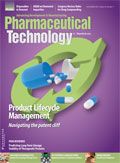Compliance in Quality Systems
Siegfried Schmitt of PAREXEL discusses regulation requirements for quality systems.
Q. What’s wrong with compliant quality systems?
A. Reading healthcare regulations for pharmaceutical products, the key to compliance and product quality is a quality management system (QMS) that meets expectations of GMP guidelines. What we continue to observe as an industry, however, is a constant stream of warning letters, import alerts, and recalls. FDA’s Rick Friedman delivered a presentation on Sept. 30, 2013 at the Regulatory Affairs Professional Society (RAPS) Annual Conference in Boston on sustainable compliance, in which he explained that compliance requires a quality system that meets the letter of the law and sound science-based decisions. In short, they need to go together hand-in-hand (1).
There seems to be an overreliance on thousands of standard operating procedures (SOPs) and work instructions, rather than on process and product understanding within the context of good practices. Friedman also said that without the right subject matter experts (SMEs), organizations would lack the necessary understanding, expertise, and knowledge to support quality and compliance at expected regulatory levels. In addition, industry restructuring will likely eliminate the expertise needed to reduce quality and compliance failures.
Quality systems are often large collections of documents that must be rewritten with each organizational or procedural change. Rarely, if ever, is this done proactively or (at least) in a timely manner. The mere structure of these quality systems, and their associated documentation, prevents them from being agile, effective, robust, culture-focused, and mature.
To fix this problem, organizations must take a process-oriented approach to designing and documenting quality management systems. The basic principles of a tableting process are universal, but attempting to integrate the quality systems of two tablet manufacturers would reveal few SOPs that could be used interchangeably (allowing for equipment differences) because they are generally too complex, too wordy, and not derived from common process flows. Process flows are added almost in hindsight at the end of SOPs, driven by document text, not the other way around.
A large number of compliant QMSs in their current state do not deliver product quality. They merely establish a framework of often difficult-to-maintain documents. It is the interpretation, expertise, and mental capacity of SMEs that transform these systems into tangible quality and compliance outputs. For example, how often do we see “Preventive action: update SOP.” Is this really preventive? The question should have been: Why was the SOP not appropriate in the first place?
If we want mature, agile, and compliant quality systems that deliver every time, we must re-examine how to design and build them, and have them interpreted, applied, and continually improved by SMEs. This won’t make regulatory inspections superfluous, but it would make them much happier events. In addition, it will provide companies with an important competitive advantage.
Reference
1. R. Friedman, “Moving from QC to QA: How to Assure Consistent Quality (Sustainable Compliance),” RAPS Annual Conference, Sept. 30, 2013, www.raps.org.

